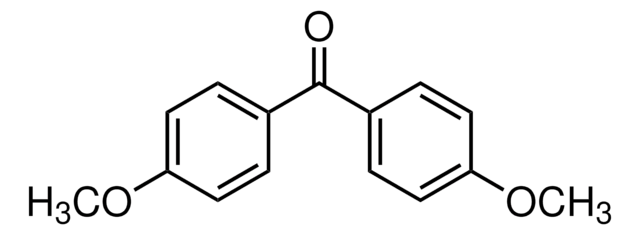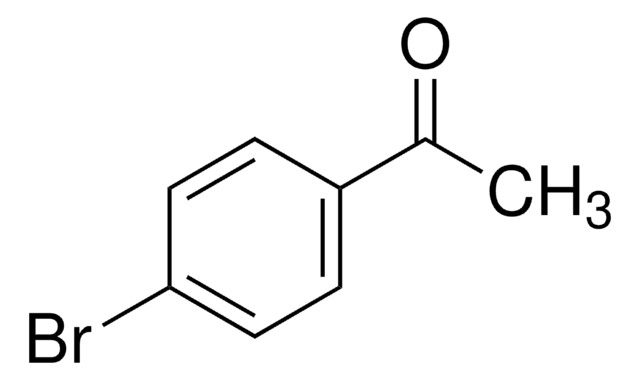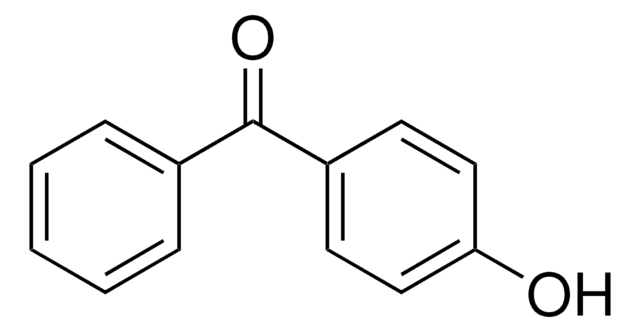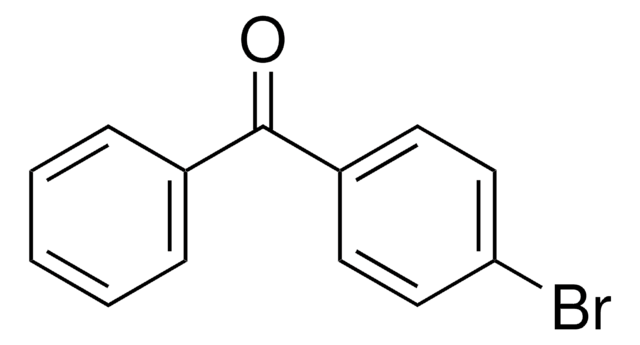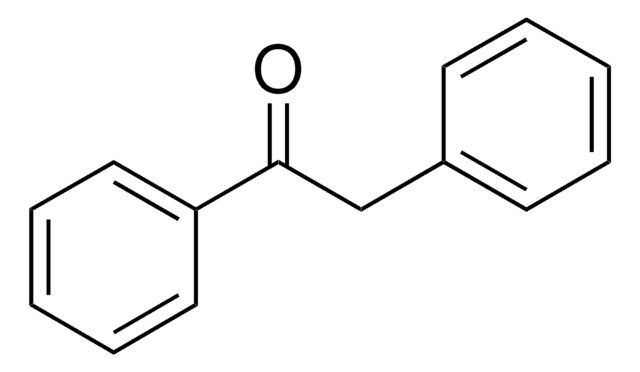All Photos(3)
About This Item
Linear Formula:
CH3C6H4COC6H5
CAS Number:
Molecular Weight:
196.24
EC Number:
MDL number:
UNSPSC Code:
12162002
PubChem Substance ID:
NACRES:
NA.23
Recommended Products
assay
99%
bp
326 °C (lit.)
mp
56.5-57 °C (lit.)
SMILES string
Cc1ccc(cc1)C(=O)c2ccccc2
InChI
1S/C14H12O/c1-11-7-9-13(10-8-11)14(15)12-5-3-2-4-6-12/h2-10H,1H3
InChI key
WXPWZZHELZEVPO-UHFFFAOYSA-N
Looking for similar products? Visit Product Comparison Guide
Related Categories
Application
- Growth of 4-methylbenzophenone (4MB) single crystals by Czochralski method and its structural, mechanical and optical characterization: This study discusses the successful growth of 4-methylbenzophenone crystals and their properties, advancing materials science applications (Ramachandran et al., 2018).
- Synthesis and characteristics of photopolymerized benzophenone: The synthesis of 4-methylbenzophenone acrylate for low migration applications in polymers was explored, suggesting its utility in safer material design (Tang et al., 2017).
signalword
Warning
hcodes
Hazard Classifications
Aquatic Chronic 2 - STOT RE 2 Oral
target_organs
Kidney,Liver
Storage Class
11 - Combustible Solids
wgk_germany
WGK 3
flash_point_f
Not applicable
flash_point_c
Not applicable
ppe
Eyeshields, Gloves, type N95 (US)
Choose from one of the most recent versions:
Already Own This Product?
Find documentation for the products that you have recently purchased in the Document Library.
Customers Also Viewed
Stanislav Gobec et al.
Bioorganic & medicinal chemistry letters, 15(23), 5170-5175 (2005-09-27)
Nonsteroidal anti-inflammatory drugs (NSAIDs) like indomethacin, flufenamic acid, and related compounds have been recently identified as potent inhibitors of AKR1C3. We report that some other NSAIDs (diclofenac and naproxen) also inhibit AKR1C3, with the IC(50) values in the low micromolar
Our team of scientists has experience in all areas of research including Life Science, Material Science, Chemical Synthesis, Chromatography, Analytical and many others.
Contact Technical Service


